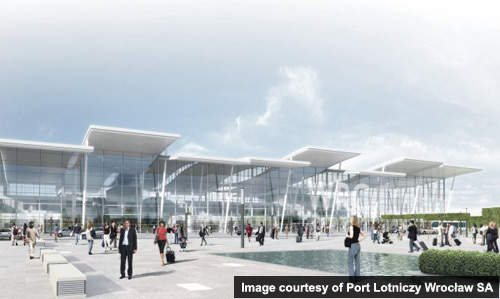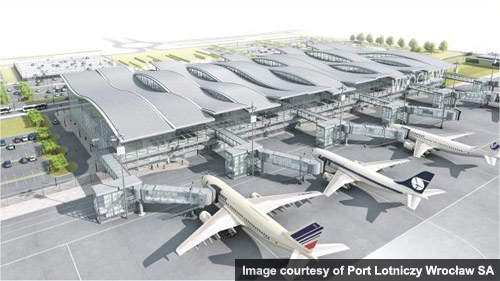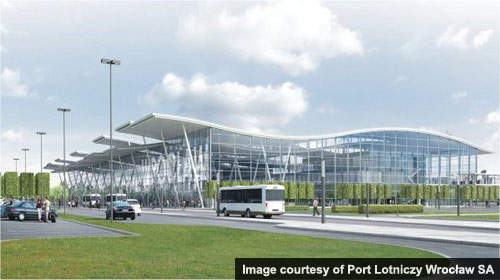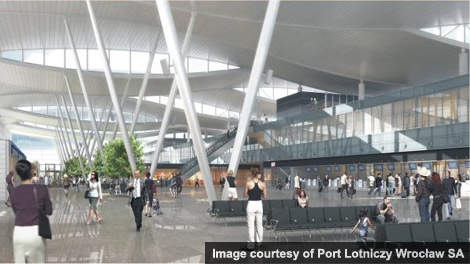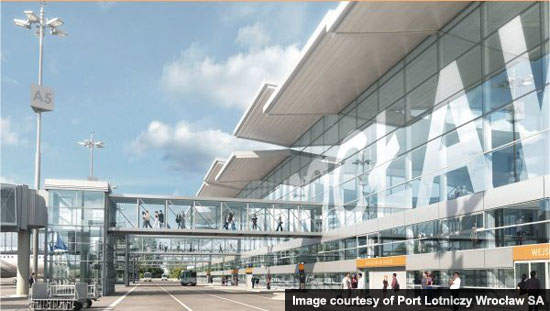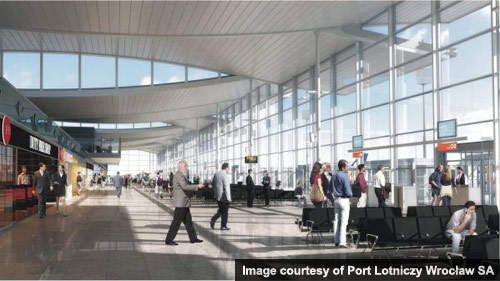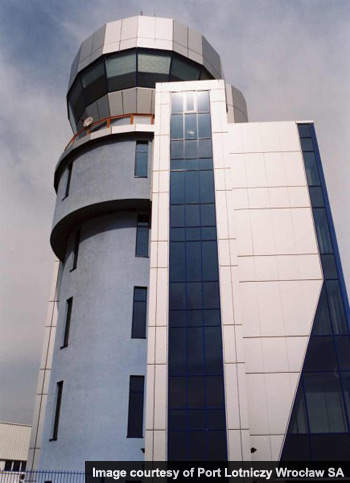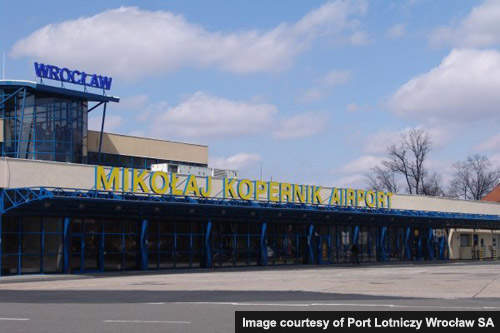Copernicus Airport in Lower Silesia, south-western Poland is a small to medium-sized international and commercial airport situated about 10km south-west of the city of Wrocław.
The airport was formerly called Starachowice Airport but renamed in December 2005. It was first built by the Germans in 1938 and has a single runway, one terminal building handling both international and domestic flights in separate sections and a 3,300m² cargo terminal.
In 2010, the airport handled over 1.6 million passengers, 23,627 aircraft movements and 946 tons of cargo. In 2011 till November, the airport handled 1,543,709 passengers and 23,354 aircraft movements.
The airport is administered by Port Lotniczy Wrocław SA which was formed in 1992 and took over the assets of the airport from the Polish Airports Authority in 1993. The airport plays host to services to over 17 overseas destinations (first international service was established to Frankfurt in 1993) and only two domestic destinations (Warsaw and Gdansk). The operator of the airport is Wroclaw Airport Company.
The airport’s services were expanded between 2007 and 2008 with new airlines joining the six that were already established.
Copernicus airport facilities and improvement
Prior to its latest expansion, the airport had the infrastructure to handle up to 750,000 passengers a year (improved between 1997 and 2001, and including new terminal facilities, cargo terminal, fire station, ATC tower, apron extensions and meteorological system). However, following passenger figures for the year showing over 900,000, it was decided in July 2006 that the airport needed to be improved and expanded to a capacity of seven million passengers a year. Consequently, JSK Architekci were asked to design a new passenger terminal and advise on a master plan to develop the airport.
Because of the Schengen arrangements within Europe, it has been necessary to instigate an expansion project at the current terminal building to bring it into line with current regulations.
The terminal, enlarged with additional floorspace of 1,900m², had allowed it to serve a total of 1.2 million passengers a year as a stop gap. Apron improvements adjacent to the old terminal were completed in May 2007.
As Wroclaw is due to host an important Euro EXPO in 2012, it could be suggested that part of the reason to expand the airport was because of increased numbers of passengers visiting the city.
The new facilities according to the master plan are to include the new passenger terminal, taxiway and apron improvements, apron expansion to accommodate 17 planes, a runway extension to 3,000m, a new fuel farm, new navigation equipment (landing and navigation lights and electrical and IT systems), a new 1,000-space car park and a new three-star hotel and conference centre.
The first phase investment of 128.11 million zloty (€33m) involves a new terminal building (built 1.5km from the old one) with a capacity of two million passengers a year. Also included in phase I is the construction and extension of airport areas, including a new apron, exit way and repair of the existing southern apron and taxiway. This phase of the project is expected to be completed by mid-2012.
Phase two will see the enlargement of the terminal building to accommodate 4.5 million passengers. Once the phase three expansion is completed by 2015, it will be able to handle seven million passengers a year. The extrapolation of passenger figures show that the airport could expect 2.05 million by 2012 and 2.23 million by 2014. The forecast for aircraft movements were 29,500 in 2012 and 32,100 by 2014.
The total investment for the airport when all projects are completed could amount to 600 million zloty (€150m).
Copernicus Airport runway
The airport features a single runway 11/29, which is 2,500m or 8,202ft in length and made of concrete / asphalt. The runway uses a CAT I instrumental landing system (ILS/DME). The runway lighting at the threshold, edge and end each has a light intensity high (LIH) system with five stages of intensity.
Copernicus Airport expansion
The airport can currently handle 3.5 million passengers per year due to the expansions that have already been completed at the airport. The new terminal 2 will have a modular floor design and will be built to maximise flexibility for future use. The airport will feature 33 airside gates and terminals 1 and 2 will be combined to function as one. The capacity of the airport after the construction of this terminal will be 12.5 million passengers per year.
Road and rail improvements
The airport was also in dire need of improvements to its rail and road links to the city of Wrocław and the surrounding area. As a result, the Municipal Office of Wrocław expanded Graniczna Street (the road leading to the airport from the city centre).
The road has been expanded to four lanes and forms a link between the Wroclaw bypass and both the old and new airport terminals. This project was completed in 2010. A ring road line, which touches the airport, was started in May 2011. The road will help in easy transfer of passengers from the airport to the stadium for Euro 2012.
A new road to the airport will also be constructed to connect Kosmonautow Street with the airport via Aleja Stabłowicka (this will be completed by 2012). A rail link is also planned between the airport and Wrocław Glowny, the main station in the city.

